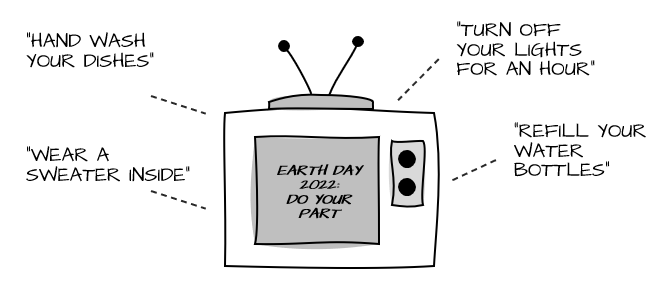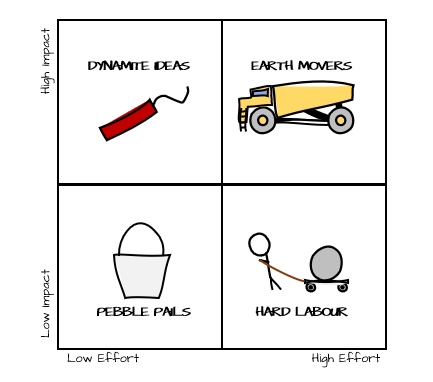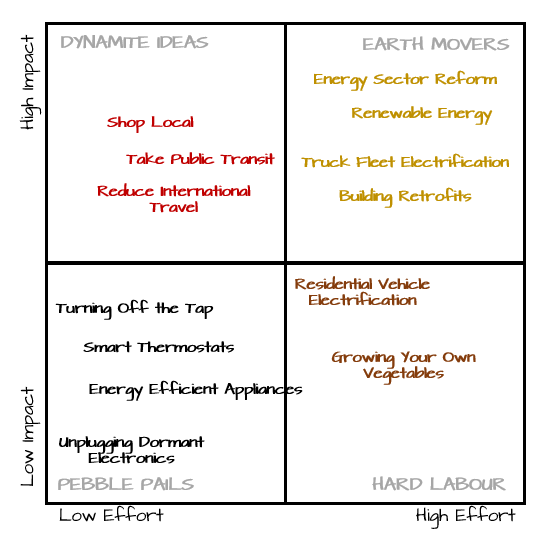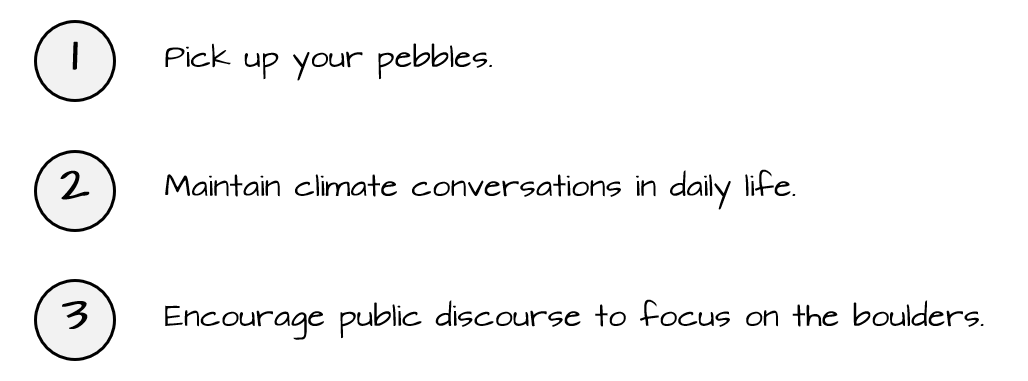What should we really talk about this Earth Day?
It’s Earth Day.
It’s been around since 1970, but these days it feels heavier than ever.
While green efforts have certainly been improving and becoming more impactful, Earth Day has felt more like marketing than an actual movement for change.
This concern extends well-beyond Earth Day.
The primary messaging we hear emphasizes diffused, limited impact efforts.
These messages aren’t wrong.
The issue is that the the overarching narrative for saving the planet pins the responsibility for systemic change on individual, self-interested decision-makers.
This is an ineffective way to manage an existential threat.
There are changes that everyone in society must make to curb our current trajectory, but these are ‘pebbles’ compared to the ‘boulders’ that must be addressed in order to affect meaningful change.
So the real question we should be asking ourselves isn’t what pebbles should each of us pick up, but what boulders can we target as a society that will make the greatest impact in the shortest amount of time?
Where are these boulders?
While the topic of conservation is much broader than greenhouse gas emissions (GHG), we’ll focus the conversation on the latest Canadian GHG emission stats to keep things simple.
We’ll first bucket weight of these ‘CO2 boulders’ into their 5 key categories.
No surprises here, Energy is the primary boulder that needs to be our focal point for meaningful change.
Now, let’s pour out the Energy Boulder Bucket and sort them by size. We’ll focus on the top 7 to keep things manageable.
If our primary goal is reducing greenhouse gas emissions in Canada, where we should focus becomes quickly apparent:
Oil and Gas Industry
Transportation
So how do we move these boulders?
Finding boulders is easy, moving them is hard.
Especially when those boulders are propping up industries and provinces in the country.
To visualize the tools at our disposal we can plot them on a simple prioritization 2x2.
Layering on example changes we could make paints a picture of where individuals as consumers and voters should be focusing their attention if they want to create meaningful change.
Note that this plotting is non-exhaustive and drastically over-simplified; it’s just meant to illustrate the relative impact we could make on GHG emissions using some of the techniques available to us.
We’ll just focus on two quadrants that tell the clearest story - The Pebble Pails and Earth Movers.
The Pebble Pails (Low Impact, Low Effort)
The examples shared here are purely illustrative, but they help to visualize the theme of this piece.
These changes all require consumer-driven decision-making.
Executed together and consistently they can make a significant impact. However, anyone that has led a large-scale change management exercise knows how difficult it is to get many disparate individuals to make day-to-day changes without significant incentive.
Even if every Canadian were to pick up their pebbles, we’d still have a long way to go to reach our climate targets.
The Earth Movers (High Impact, High Effort)
This category of change has the highest potential to move our boulders. But they come with a daunting price tag.
There is an immediate capital cost of replacing or investing in new infrastructure.
More importantly there is a political and societal cost of reform.
In theory, they are the most appealing options to action as with the stroke of a pen the powers that be can implement sweeping changes that can avoid climate catastrophe.
In practice, we face game theoretical challenges at an international level, and a very heavy political burden at a national, provincial, and municipal level.
So What?
Pebbles can be moved by an individual, boulders can’t.
So this Earth Day the task is simple.
Did this piece help you better understand where we need to focus to hit climate goals? Share below!






















